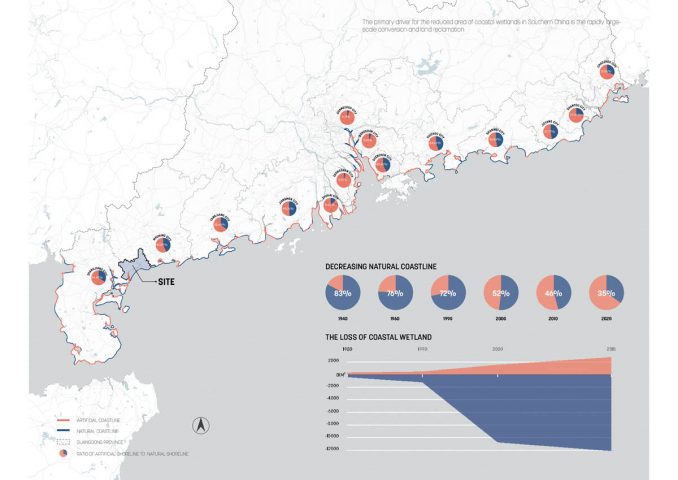
By analyzing a land reclamation plan in Wuchuan, a coastal city with a disaster-prone economic fringe and aquaculture-focused identity, this project re-imagines a response to the typical coastal land reclamation practiced in Chinese littoral cities, such as Shenzhen and Hong Kong. The project discusses the coastal development modes between typical land reclamation with artificial seawalls and aqua-cultural landscape with hydrological gradient. The design proposes integrating aquaculture and urban growth as Resilient Aquaculture Armor. The project aspires to support and expand the roles that aquacultures play in building resilient coastlines, urban ecologies, and a cohabited public realm.
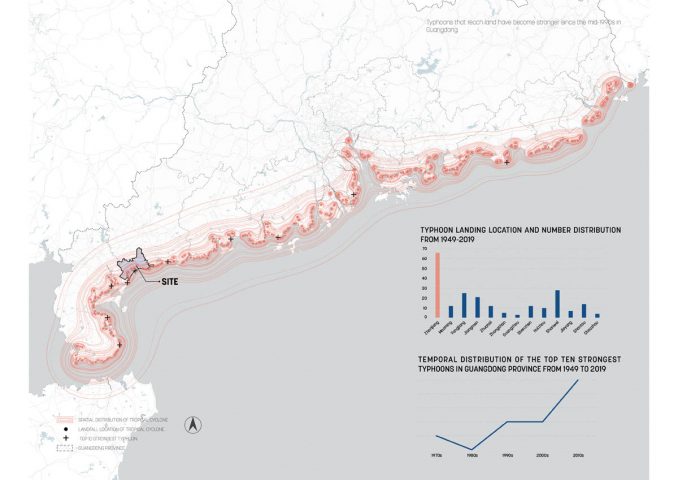
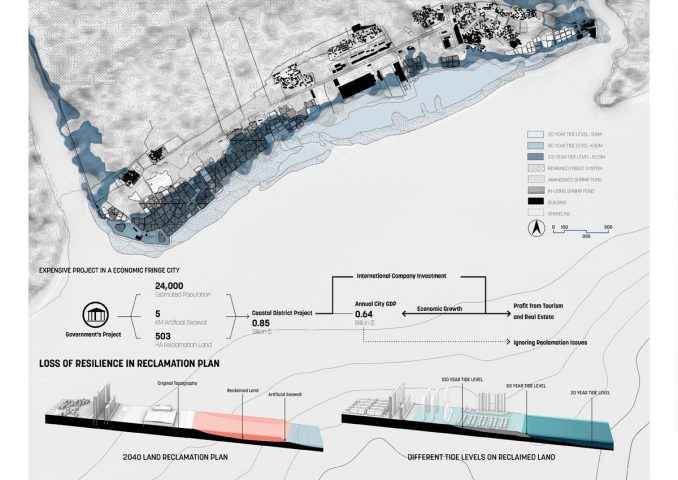
Guangdong Province has the longest coastline in China, but the coastal wetlands have been gradually reduced in the last 40 years. The primary driver for the reduced area of coastal wetlands in Southern China is the large-scale and fast conversion and land reclamation of coastal wetlands. Compared with the economically developed cities such as Shenzhen, Hong Kong, and Macau in the Pearl River Delta, Wuchuan City, as a fringe city with a relatively slow economic development, is currently at a stage where the coastline is occupied by numerous aquaculture ponds but is about to enter the phase of large-scale reclamation for urban development and city expansion. At the same time, the area around Wuchuan is where tropical cyclones land most frequently in the Chinese littoral zone.
In 2020, the local planning bureau proposed an ambitious coastal district project. In this project, 24000 people will move into this new area. The bureau will reclaim 500 hectares of land and build a 5KM artificial seawall to withstand the threat of storm surges and tropical cyclones. The cost of infrastructure construction is even higher than the average annual GDP of Wuchuan city. The reclamation process will explore real estate and tourist attractions, ignoring typical land reclamation problems in Wuchuan city- monofunctional flood-protection infrastructure is prone to failure, and reclamation land blocks the original dynamic edge in the littoral zone.
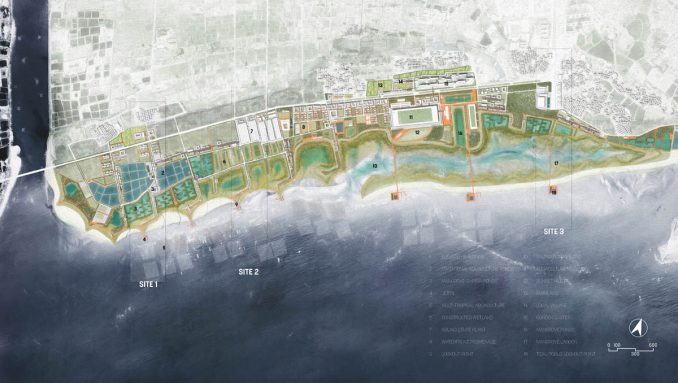
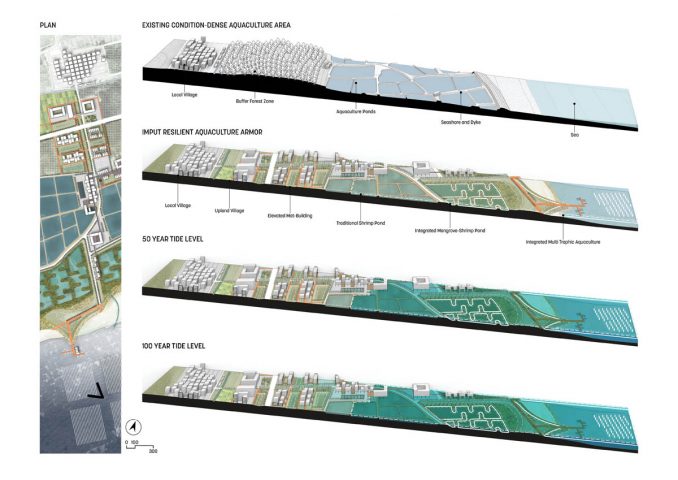
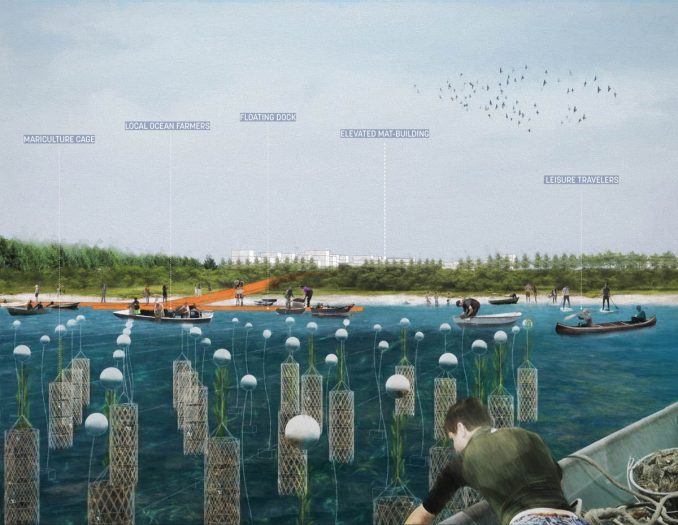
This project aims to transform the existing aquaculture ponds into resilient aquaculture armors based on the typical land reclamation problems in Chinese coastal cities and poly aquaculture systems. The design concepts create a series of productive landscapes and attractive places, formalizing a compelling resilient landscape that is beneficial to dealing with the littoral urban growth and re-vegetating dynamic coastal ecosystem.
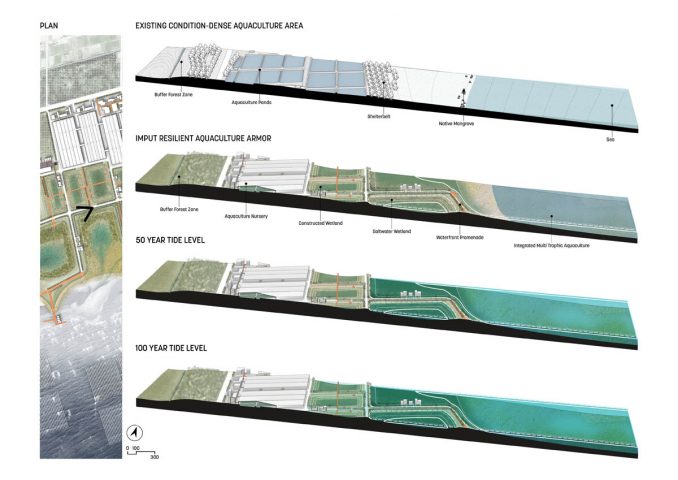
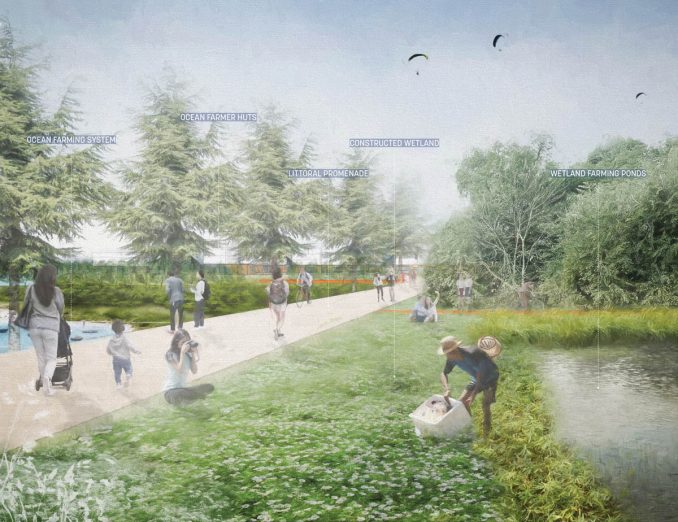
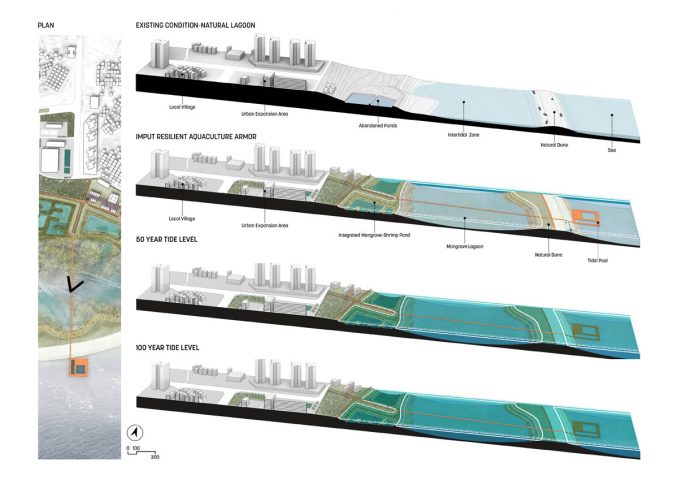
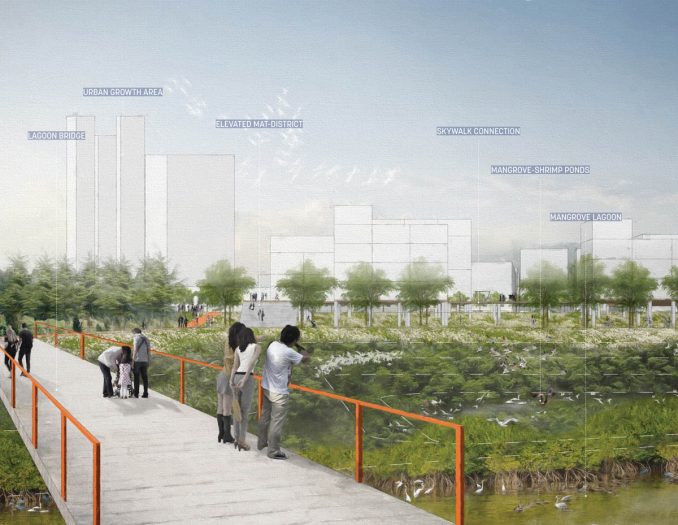
As a response to the development mode of coastal cities, this project attempts to discuss an alternative to coastal zone development in non-metropolitan or economic fringe cities. This project serves as a design proposal showing how the transformation of mono-functional aquaculture landscape with cultural characteristics and financial support inspires cities’ future development.
Student Project | Resilient Aquaculture Armor | Jiazhi(Jake) Yin
Student Names: Jiazhi(Jake) Yin
School: University of Toronto, John H. Daniels Faculty of Architecture, Landscape, and Design
Advisors: Fadi Masoud
